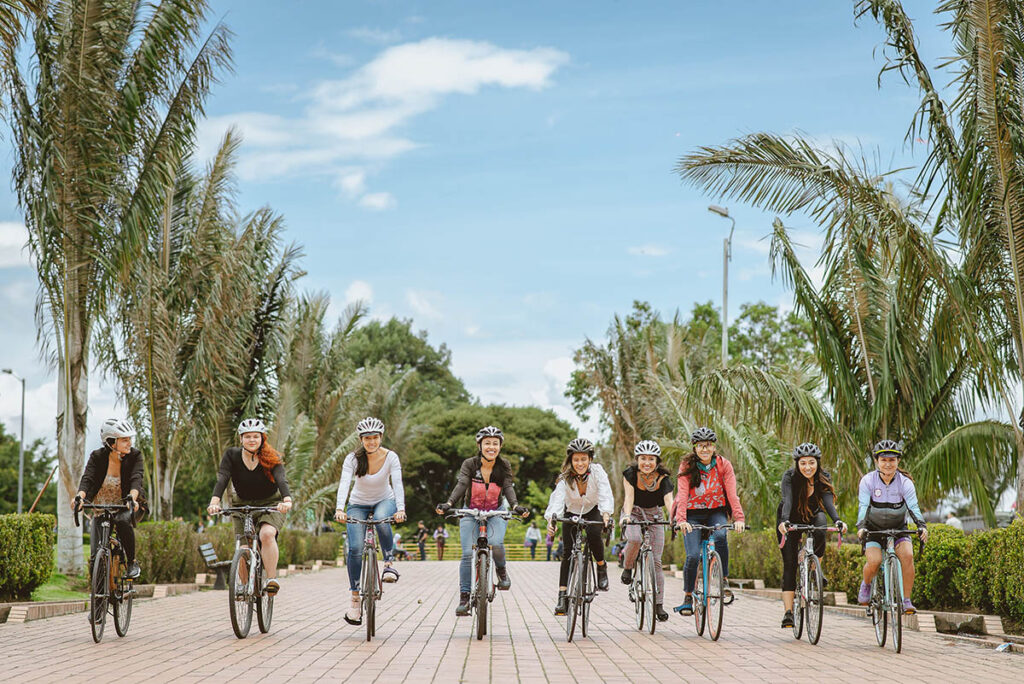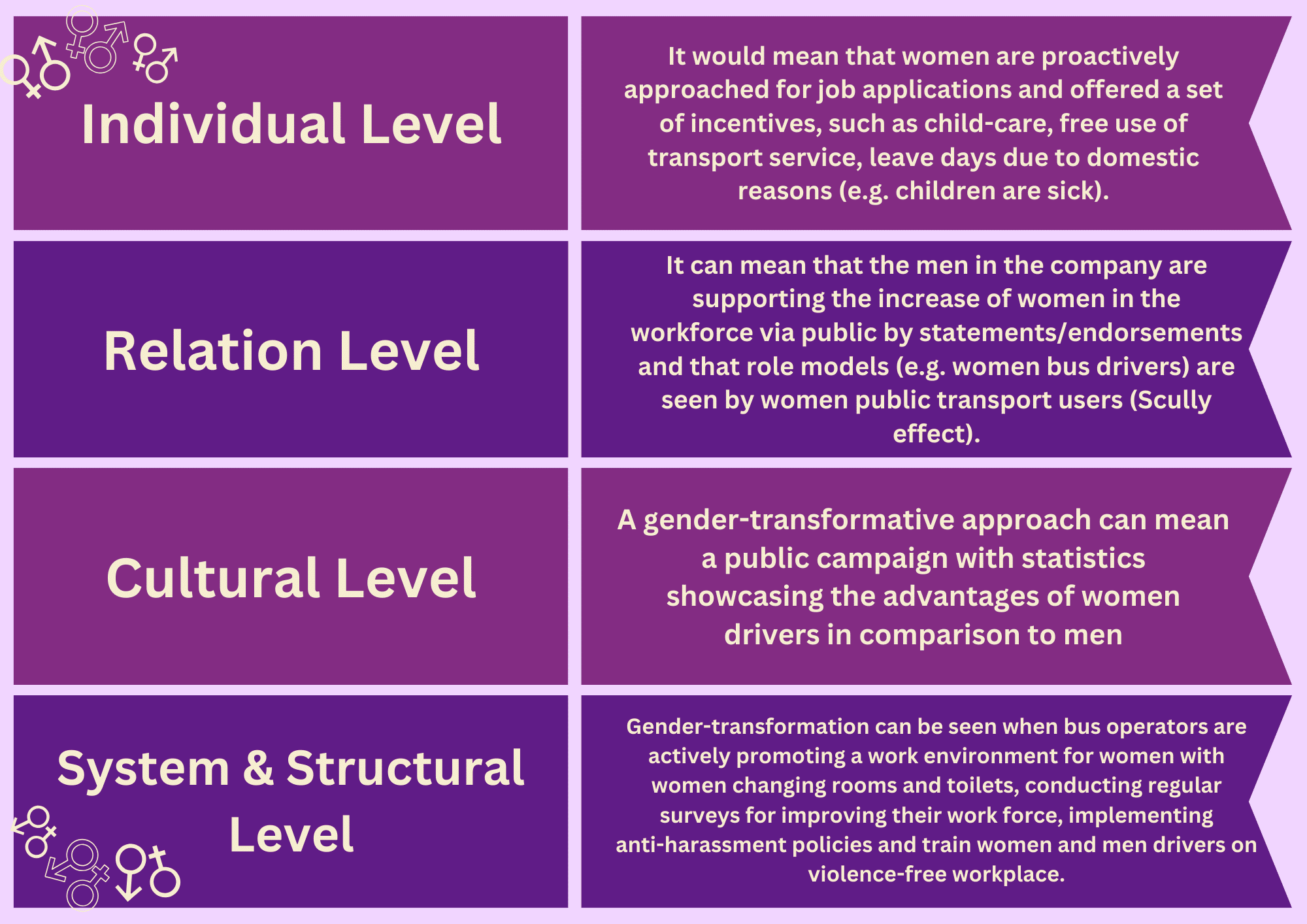
Today, we are well aware of the need to protect the planet while, at the same time, nations are promoting prosperity. Orienting along the Sustainable Development Goals, transformation of the transport sector has to focus on gender equality, affordable and clean energy, industries, innovation and infrastructure, sustainable cities and communities, and climate action. We recognise that various strategies for development must go hand – in – hand when addressing social challenges while tackling climate change and environmental protection.
One of these social challenges is the transport sector. We know that women make up an essential part of the transport sector but as of now, the transport sector is a men-dominated field, where women, girls, and gender minorities are not adequately represented. In 2018, women still made up only 20% of the global transport workforce [1]. Therefore, we need to create an open space in order to raise awareness on the obstacles women face in public transport and the transport sector. And while people worldwide are aiming for a paradigm shift to zero-emission transport, we need to consider the high reliance on public transport and low carbon traveling modes for women in the discussions on the decarbonization of the transport sector more, as women are one of the key drivers of a green transport transition.

However, due to the underrepresentation of women, gender perspectives are less likely to be considered in decision making, which limits about half of the world population in their use of transport, as women’s travel patterns are more complex than men’s, often including factors like children, additional baggage, a mix of different services, distances, travel times, etc.
The goal has to be to include women’s perspectives and needs when planning transport and to involve them at all stages. This can be achieved via gender-transformative approaches. Gender-transformative projects have the potential to create a huge impact on society and life, and related to transport, creating better mobility options as well. These approaches are working on multiple levels and reflecting critically the underlying social norms, attitudes, and behaviors.
We need to understand that gender-transformative is a quality criterion, aiming for the highest impact to increase justice between genders, equal access to resources, rights and norms and fighting discrimination and addressing the roots of the inequality. Therefore, transport planning should not only address issues at the societal and institutional level, but also on individual, cultural and relation level.
If we use the example of creating new job opportunities for women in the public transport sector, then gender-transformative approaches would look like this:

Only if all these different levels are being addressed when planning projects in the transport sector, will we have a gender-transformation of this sector. We need gender-transformative transport, as good transport policies aim to bring education and health care, jobs, and leisure activities within reach of as many people as possible. Ultimately, inclusive transport systems are essential to foster societies that leave no one behind and enable all citizens to participate and contribute.
NDC Transport Initiative for Asia (NDC-TIA) is part of the International Climate Initiative (IKI). The German Federal Ministry for Economic Affairs and Climate Action (BMWK) supports this initiative on the basis of a decision adopted by the German Bundestag. It supports China, India, and Viet Nam as well as regional and global decarbonisation strategies to increase the ambition around low-carbon transport. For more information on the project, please visit: https://www.ndctransportinitiativeforasia.org/.
[1] ILO. (2019, November). Employment Distribution by Economic Activity (by sex) – ILO modelled estimates. ILOSTAT Database. Retrieved 04.03.2024 from ILO Data Explorer
 ©GIZ Philippines by Jilson Tiu
©GIZ Philippines by Jilson Tiu
Zuadi Pinto Toloza